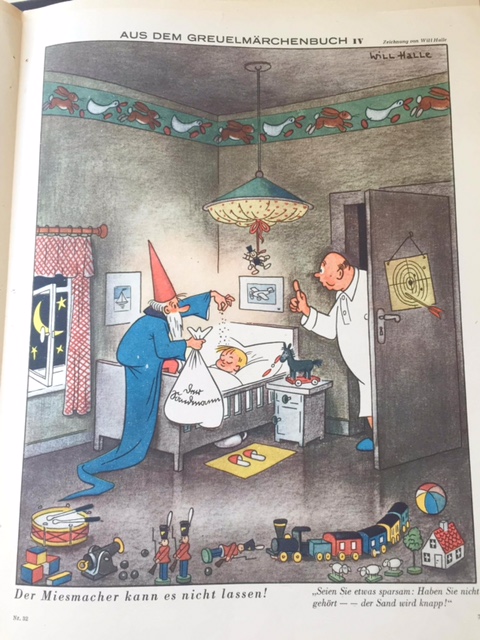
Background: Although Nazi cartoonists went after others with considerable energy, there was much less domestic satire. Hitler other Nazi leaders rarely appeared in cartoons, and when they did it was always in a positive light. The main use of cartoons on domestic themes before the war was to complain about complainers. Once the war began, cartoons focused on complainers, but also on gossipers, listeners to foreign broadcasts, or people whose belief in final victory was wavering.
The source: Taken from my own collection or from the University of Heidelberg’s on-line collections. Theirs are available under a Creative Commons License.
Nazi Caricatures on Domestic Themes
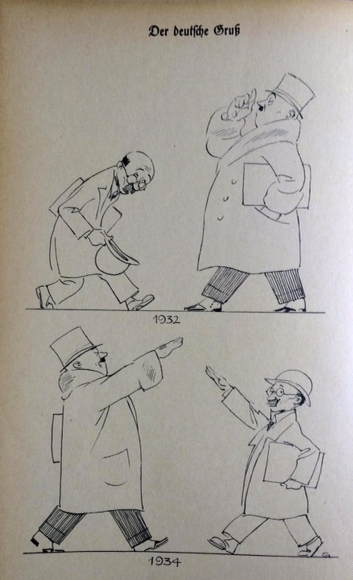
Caption: “The German greeting.” The top frame shows two gentlemen meeting in 1932 and 1934. The first time they clearly are not Nazis, but by 1934 they are giving the Nazi salute. The point of the cartoon is that if they weren’t Nazis in 1932, they probably are “Nazis of convenience” in 1934.
Source: Kladderadatsch, #6/1934. My collection.
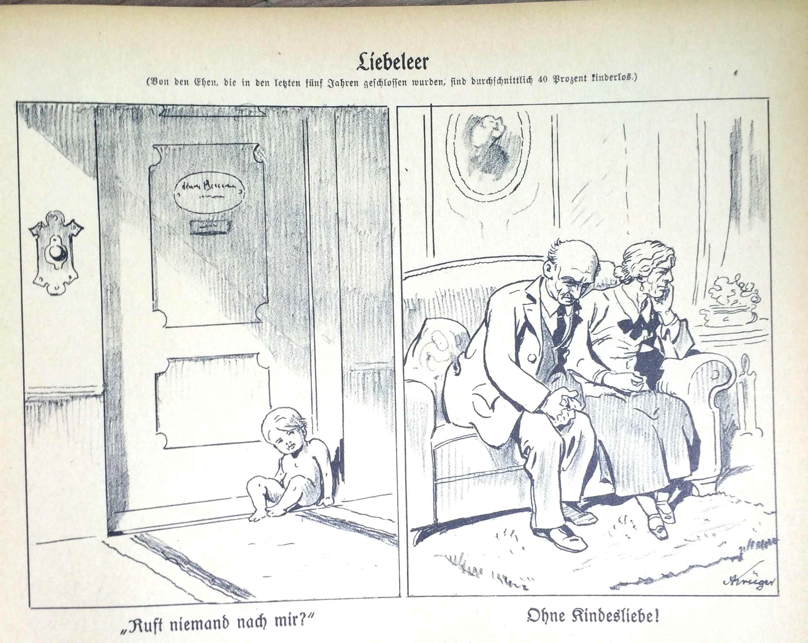
Caption: “Empty love.” The cartoon notes that 40% of marriages over the previous five years remained childless. The first frame (shown to the left) has a baby asking: “Does no one want me?” The next frame shows a bitter old couple who had never had children. The Nazis were engaged in an energetic campaign to persuade Germans to have as many children as possible.
Source: Kladderadatsch, #6/1934. My collection.
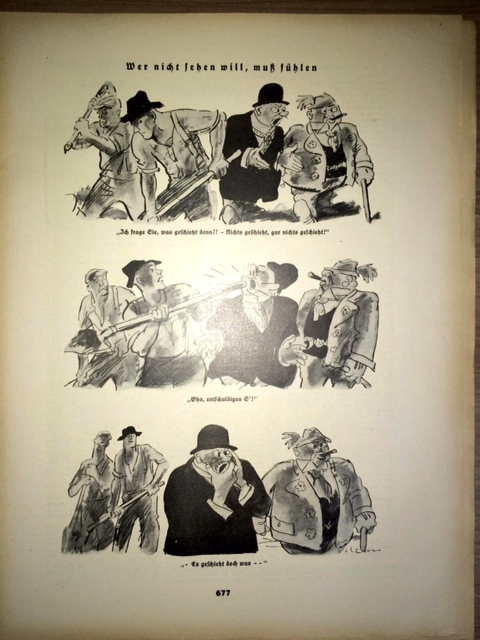
Caption: “He who doesn’t see must feel.” In the top frame two gentlemen are complaining that nothing is happening while two other men are hard at work in the background. One worker manages to get his shovel in the cheek of the complainer, with the comment in the bottom frame that “Something is happening after all....”
Source: Brennessel, #43/1934. My collection.
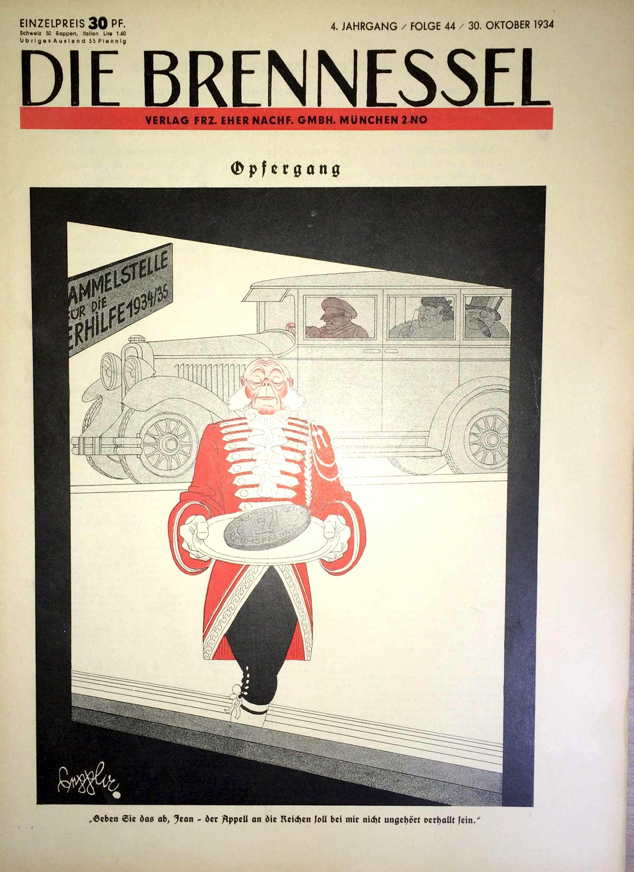
Caption: “Sacrifice.” An elegantly clad servant is delivering a pfennig coin to the offices of the Nazi Party charity: “Give that to them, Jean — I will not ignore the appeal to the rich.” The obvious point was that those with money weren’t giving enough of it away.
Source: Brennessel, #44/1934. My collection.
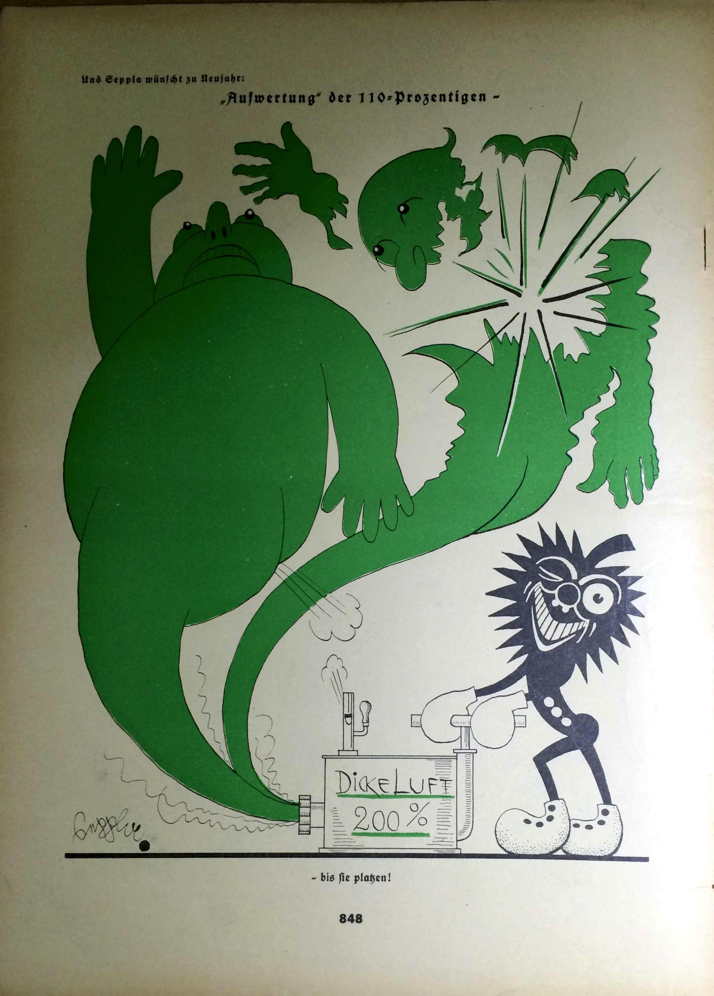
Caption: “Evaluating the 110%ers . . . until they pop!” The Nazis regularly complained about those who tried too hard to be Nazis for pragmatic reasons. In his case, the symbol of the magazine is pumping up such people until they explode. Germans were to be Nazis from conviction, not in the hopes of bettering themselves.
Source: Brennessel, #53/1934. My collection.
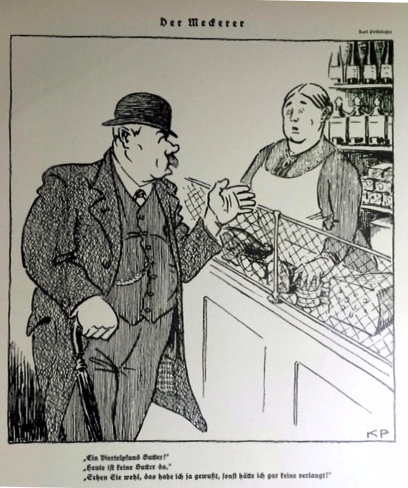
Caption: “The complainer.” A gentleman asks for butter, only to be told there is none in stock. His answer: “I know. Otherwise I wouldn’t have asked.” There were shortages of many things as the Nazis put all available resources into building up the military. Cartoons like this suggested that complaining about such things was not a good idea.
Source: Brennessel, #48/1935. My collection.
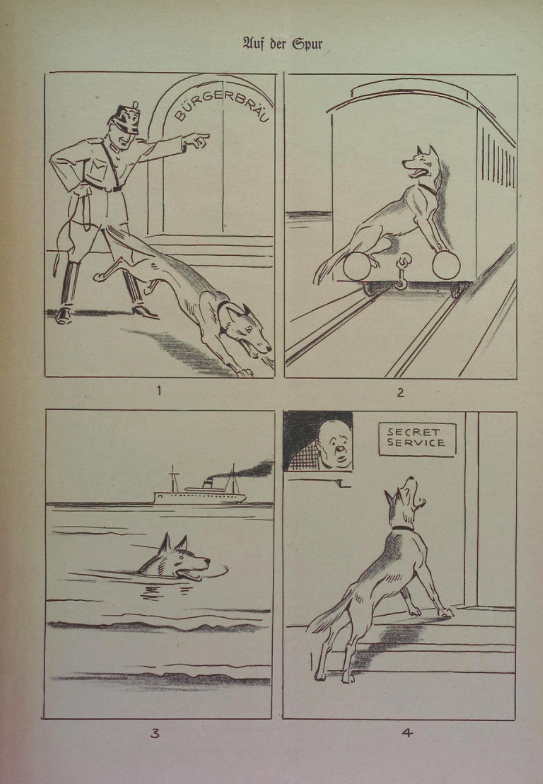
Caption: “Following the trail.” Hitler narrowly escaped an assassination attempt in November 1939. This cartoon suggests that the attempt was organized by the British Secret Service.
Source: Kladderadatsch, #48/1939. Heidelberg collection.

Caption: “Clothing rationing in Paradise.” Clothing rationing was part of wartime life. In this cartoon, Eve is complaining that her fig leaf cost three points, but look at all the animals running around in fine garb.
Source: Kladderadatsch, #51/1939. Heidelberg collection.
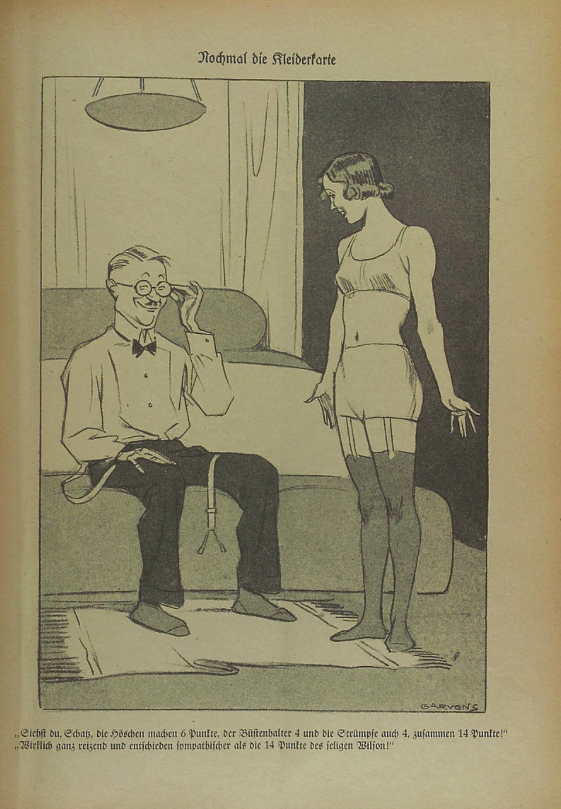
Caption: “The clothing ration again.” A woman shows her husband her new purchases, which totaled 14 ration points. He replies: “Quite fetching, and decidedly more attractive than the blessed Wilson’s 14 Points.” The United States was not yet in the war, but FDR’s policies were regularly compared to those of his presidential predecessor.
Source: Kladderadatsch, #2/1940. Heidelberg collection.
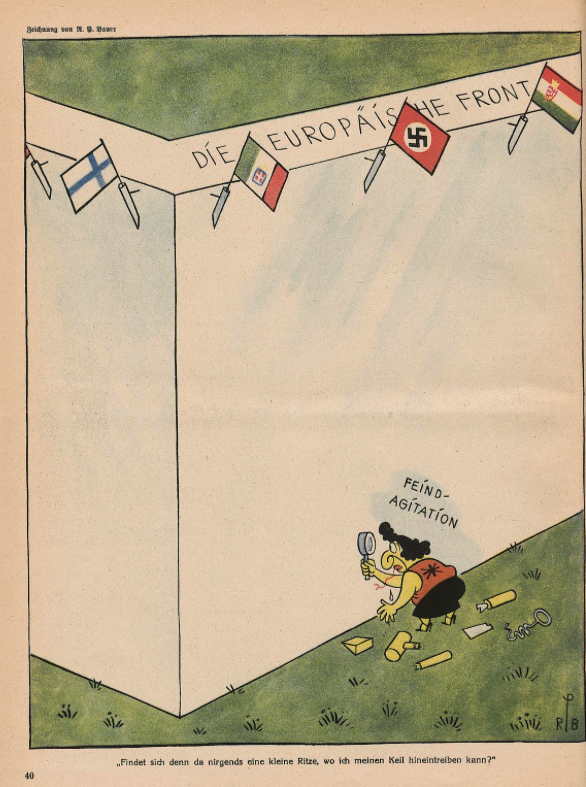
The enemy is attempting to infiltrate agitation into Germany: “Isn’t there a crack anywhere for me to drive a wedge?”
Source: Fliegende Blätter, #3/1943. Heidelberg collection.
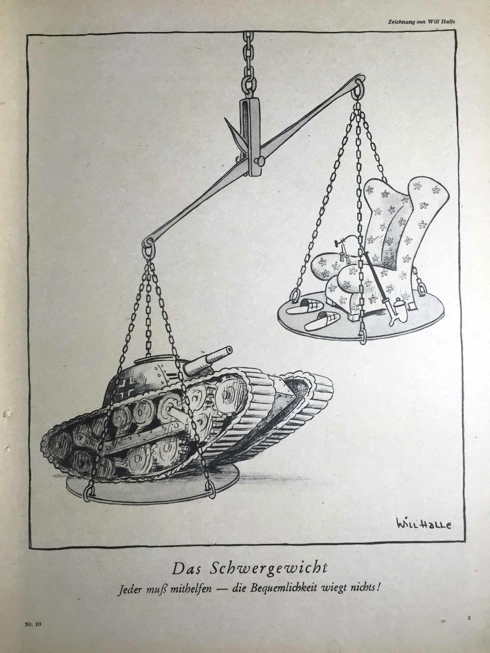
This cartoon was part of Goebbels’s “total war” campaign. Building tanks is more important than sitting comfortably in one’s easy chair. Each must help — comfort is unimportant.”
Source: Lustige Blätter, #10/1943. My collection.
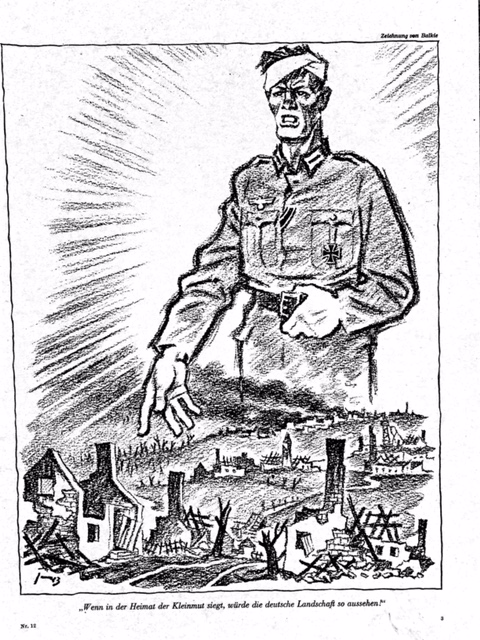
Another cartoon on the same theme. The soldier says: “If cowardice prevails at home, this is how Germany will look.” Until Stalingrad it seemed probable to most Germans that they would win the war. After Stalingrad, the propaganda theme was that Germany would win — but only if everyone gave their full efforts to win victory.
Source: Lustige Blätter, #12/1943. My collection.

Caption: “The Atlantic Wall.” A year before D-Day, this cartoon claims that Germans can work securely at home, defended against Allied invasion by the Atlantic Wall.
Source: Lustige Blätter, #26/1943. My collection.
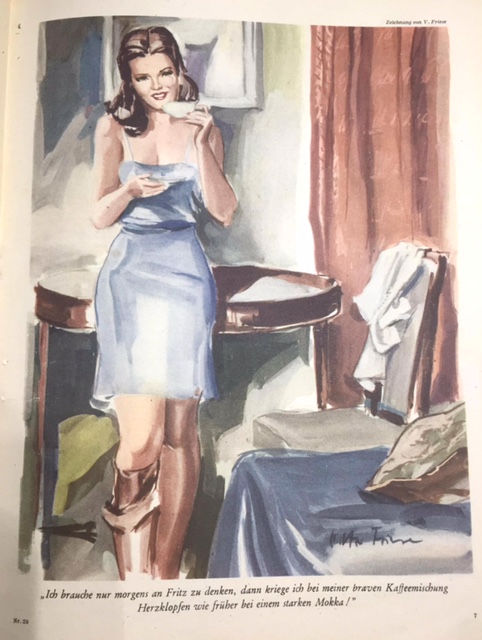
The comely lass says: “I only have to think of Fritz in the morning to get the same boost from substitute coffee that I formerly got from a cup of strong coffee.” Wartime German coffee was a poor substitute from the real thing, but this woman doesn’t seem to miss it much.
Source: Lustige Blätter, #29/1943. My collection.
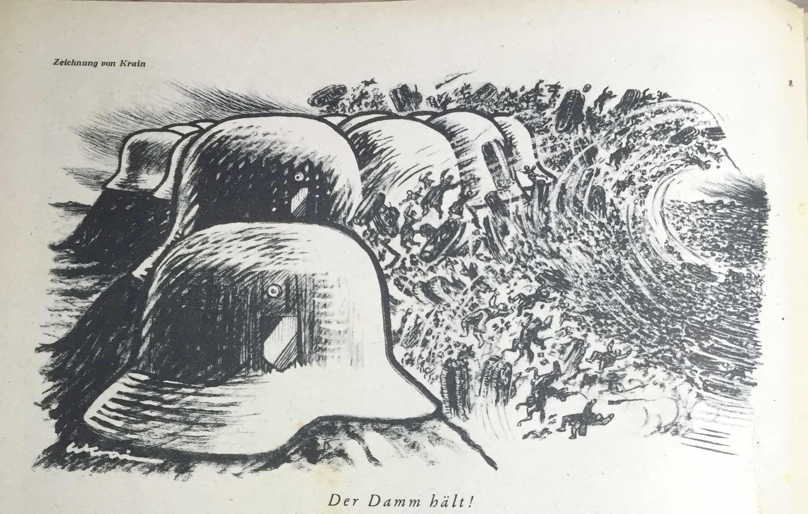
Caption: “The dam holds!” This is a dramatically different image than those of 1939-1942. Powerful waves wash against German military helmets. The war has become a defensive war, but the cartoon makes clear the strength of the threat Germany faces.
Source: Lustige Blätter, #37/1943. My collection.
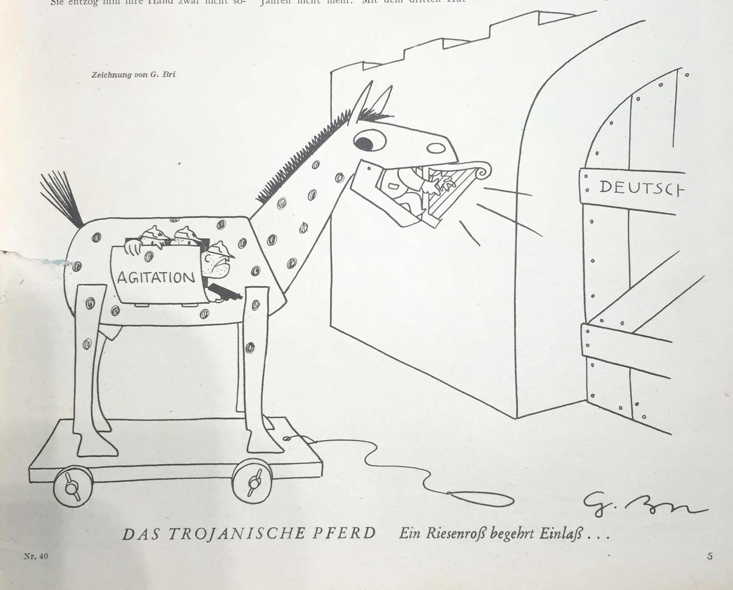
The wooden horse of enemy agitation tries to get into Germany.
Source: Lustige Blätter, #40/1943. My collection.
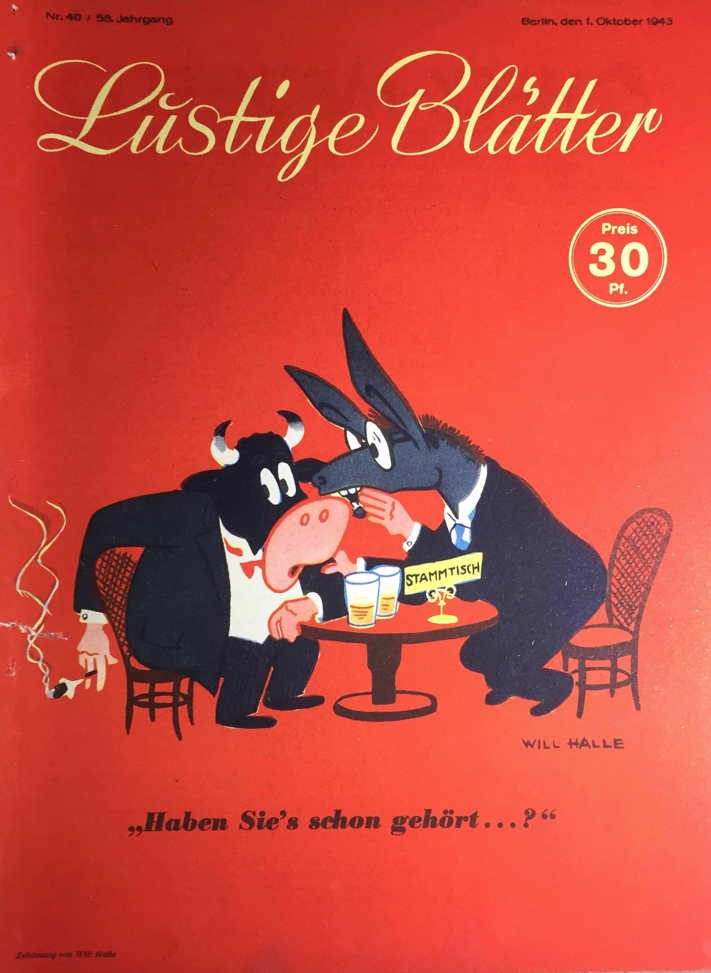
Caption: “Have you heard...” Two dumb Germans are discussing rumors.
Source: Lustige Blätter, #40/1943. My collection.

Caption: “Model 1918 doesn’t work any more!” A Nazi slogan in 1943 was “1943 ≠ 1918.” The claim was that Germany had collapsed under difficult conditions in 1918, but that the situation in 1943 was entirely different. In the cartoon, the Allies, with a Jew whose sign says “Freedom for the European peoples,” are repeating their tired old agitation from the previous war.
Source: Lustige Blätter, #49/1943. My collection.
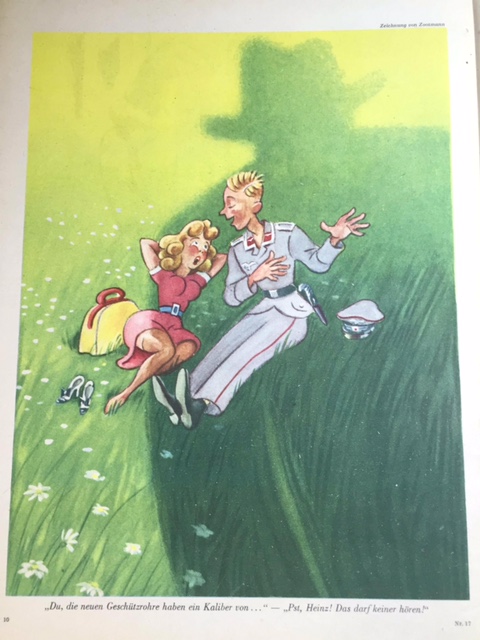
In spring 1944 the Nazis conducted a major propaganda campaign against alleged enemy spies. In this cartoon a soldier is telling his girlfriend about a new artillery piece. Before he can give any details she says: “Quiet, Heinz! That’s a secret!” The shadow of an enemy spy illustrates the peril.
Source: Lustige Blätter, #17/1944. My collection.
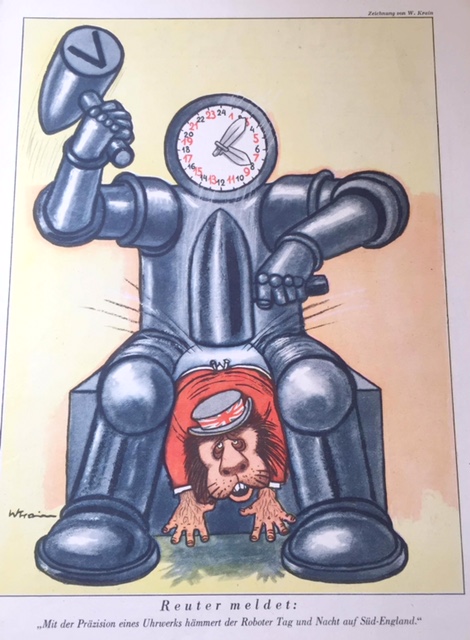
Caption: “Reuters announces: ‘With clockwork precision the robots are hammering Southern England day and night.’” The V-1 robot spanks the British. Being able to cite enemy sources was particularly effective propaganda. The V-1 missiles aroused tremendous hopes among Germans. Maybe the new weapon would turn the tide of the war. Destructive as they were, however, it quickly became clear to Germans that they were not a decisive weapon.
Source: Lustige Blätter, #32/1944. My collection.


